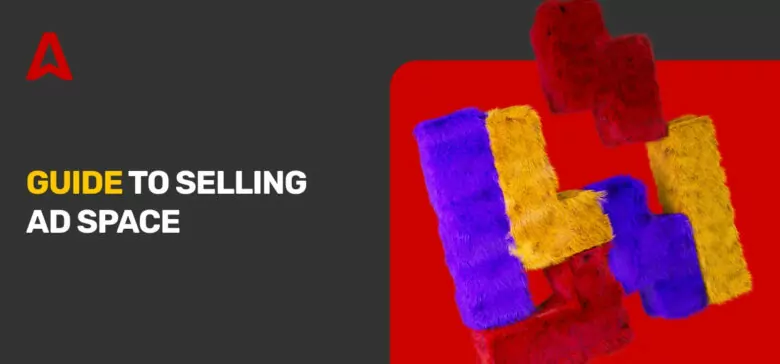Selling online ad space for your website might seem complicated at first glance. Where do I find advertisers? How to sell ads on my website? Shall I pitch it to brands myself? Will my website be approved by an advertising platform? These are common questions that site owners ask.
This article will answer them and show you how to sell ad space on your website. And there’s no limit on your earnings when you figure it out.
How to sell ad space on your website?
Allocating ad space is easy, but it’ll serve you no good if no one advertises on it. Selling ad space effectively involves finding third parties willing to showcase themselves to your audience. You can sell advertising space directly to advertisers or go through an intermediary. The latter is known as an ad network, and there are many examples, including Adsterra.
What is ad space?
Ad space is the sections of your website where third parties can place advertisements. You’ll commonly encounter ad spaces at the top and bottom of a website, a sidebar, or in the middle of articles. These spaces display different types of advertisements, including Banners, Social Bar units, Native Ads, In-Page Push Ads, etc.
Every publisher decides the sections of their website where brands can place their ads.
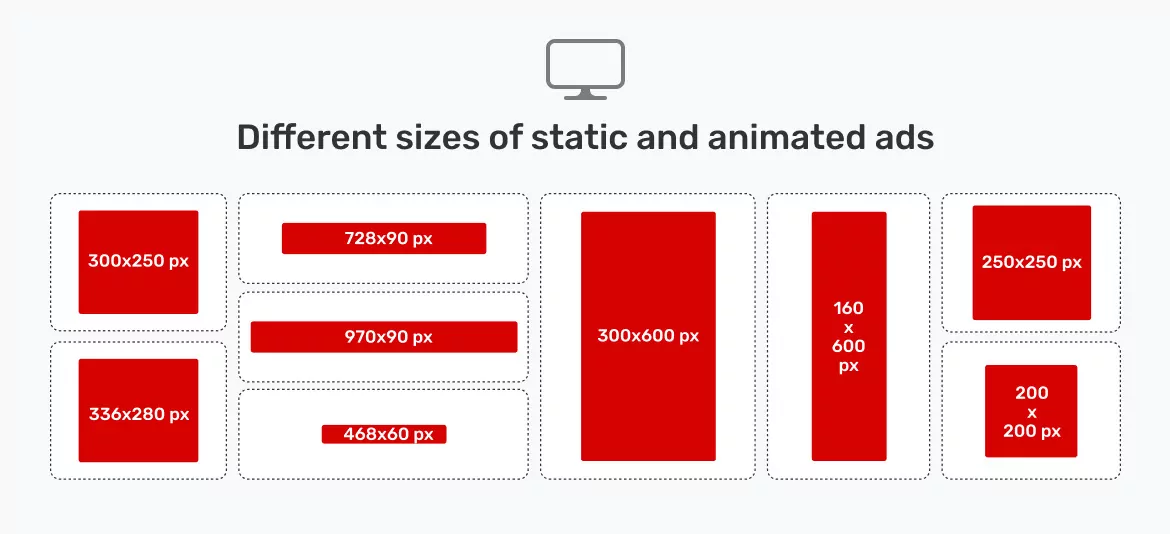
Why selling ad space is a lucrative monetization strategy?
Knowing how to sell ad space effectively on your website is a profitable monetization strategy. The most lucrative and straightforward way to sell advertising is to copy and paste ad codes on your website. You can show ads to your visitors and watch your revenue grow. Great results come without additional investment on your part. You can do it within less than 20 minutes, that’s how easy it is. Follow basic steps, when you want to earn money by putting ads on your Google Sites or monetize a Wix website with ad codes.
You can start earning as a publisher regardless of your traffic level and gain access to 15,000+ reputable advertisers and media buyers. Non-intrusive and innovative ad formats have been designed for you to have higher CTRs and overcome with the users’ ad fatigue.
Preparing your website for ad sales
There are specific requirements to prepare your website for ad sales. You need good traffic because brands want to showcase themselves to an engaged, relevant audience. You also need to publish high-quality content that people are willing to place ads next to, and your site should have an appealing design and look.
Let’s expand more on that.
Building a strong foundation: quality content and traffic
Traffic
Traffic is the number of people, viewing and engaging with your content. Your website should have a sizable audience to court advertisers. You must not have very large traffic or following, but having thousands of monthly visitors is a good place to start. The good thing is that some ad networks, including Adsterra, don’t have minimum traffic requirements, so you can start small and boost your earnings as your traffic grows.
You can follow certain practices to increase your website traffic, including using creative headlines, optimizing your content for mobile displays, targeting keywords with high search potential, and publishing long-form content.
Through Adsterra you can connect with 15K+ advertisers and media buyers launching 200K+ ad campaigns every year. Earn with top formats like Social Bar with up to 30X higher CTRs and the ever-effective Popunder, and enjoy fast payouts. Start now, it’s quick and simple to go through registration and approval!
High-quality content
High-quality content refers to things people want to read or watch, that is the best tip for how to monetize content. Put yourself in your target audience’s shoes and ask, “What type of content would make me want to return to a website for more information?”
Your posts should be simple to read and understand. Provide factual information to viewers. Avoid using verbose and unnecessary language or writing bluff content that drives the user away.
Design and usability (UI and UX)
Your website’s interface should be intuitive and easy to use. It should have a visible navigation bar and clear indicators for navigating between pages. Your website should use colors and fonts that are attractive to most people’s eyes. Use high-quality images, videos, and infographics to illustrate your point.
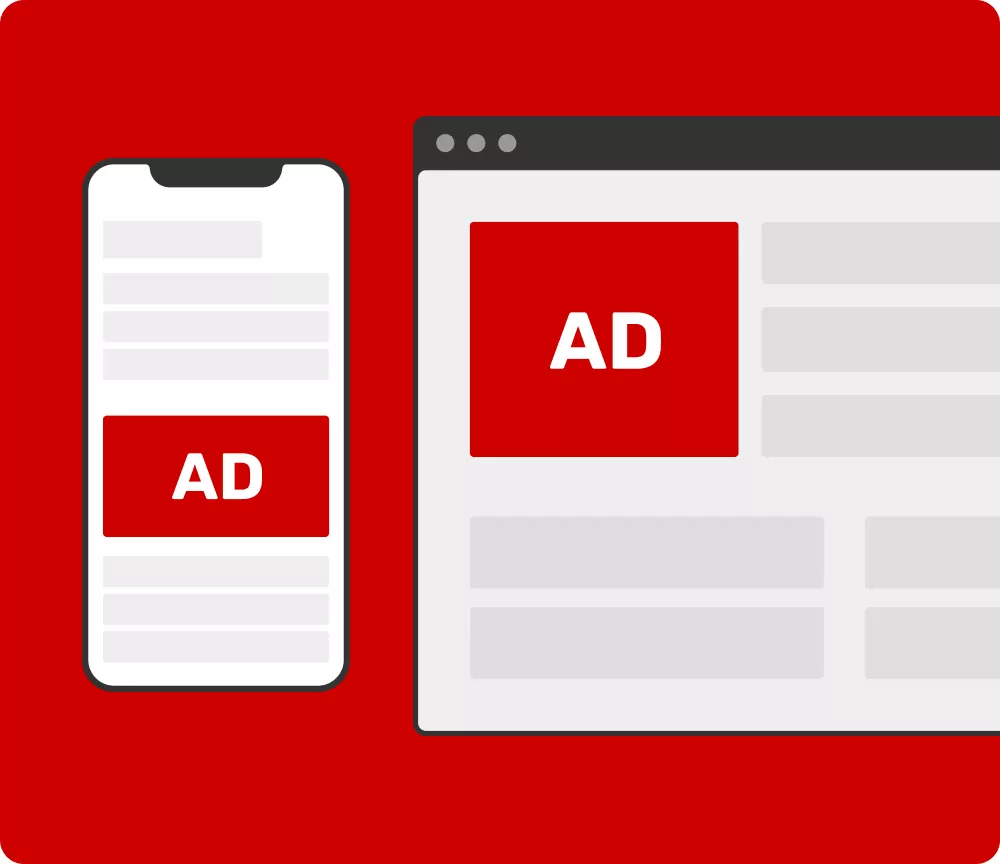
Who are you selling ads to? Understand your audience
Research your audience to be able to create relevant, compelling content. You can learn more about who you are selling to with the tools and approaches you’ve got at hand:
- Surveys and polls on your site,
- Blog’s analytics with Google Analytics and social media engagement with Facebook Insights, Twitter Analytics, etc.,
- Competitor analysis,
- Trending topics using tools like Google Trends,
- Keywords research that your target audience looks for in search engines, with Ahrefs or SEMrush,
- Content gap analysis to learn topics you’ve missed out on, with SEMrush,
- Public forums and community threads,
- Demographics and psychographics.
By maximizing engagement and dwell time, publishers can increase ad monetization and the value of their ad inventory and generate more revenue.
Trustworthy ad server
An ad server (or ad network) enables digital publishers to refine and monitor online advertising efforts. It serves targeted ads, offer in-depth performance insights, and support a seamless user experience. By simplifying ad operations and unlocking greater revenue potential, an ad server collects data and is vital for publishers seeking smart, effective monetization without compromising the audience’s needs.
Transparency
You must provide transparency to your audience and try to give all the information to develop trust. When you interact with potential advertisers, also provide factual information about your solid traffic flow, page views, social media following, brand appeal, etc. Be open about your site’s strengths and shortcomings (growth zones).
Selling and pricing your ad space
If you work with an ad network, pricing your ad space is no guesswork. You just add codes on your website and go on working on your traffic growth, or set up a new website in one more profitable niche. If you work with Adsterra, there is always a good CPM for web publishers, including advanced network capabilities that contribute to the best revenue outcomes.
If you’re selling ads directly, trust your value and don’t hesitate to charge what your platform truly deserves. Rates depend on factors like niche, website traffic, audience loyalty, engagement, etc.
Choosing the right ad format
Choosing the appropriate ad format is one of the first steps to figuring out on how to sell ad space efficiently on your website. The well-picked ad inventory will tackle users’ ad fatigue (banner blindness), and overcome ad blockers. You can ask your platform support or Adsterra Partner Care team to make the best choice.
Popunder
Full-page ads appear in a new browser tab or window. Pop ads are one of the highest-paid formats, effective in niches like iGaming, VPNs, e‑commerce, and much more.
- UX-friendly since they don’t interrupt users.
- No website space.
Native Ads
It looks similar to your content, so that readers may not even notice it’s an advertisement.
- Less disruptive to the user experience.
- Known for solid engagement and high CPMs when properly integrated.
Social Bar
Adsterra’s proprietary ad format that perfectly fits any web or mobile page. Delivers up to 30X greater CTRs than standard web push ads and can take the shape of alerts, chat bubbles, widgets, carousels, countdowns, and more.
- Great user experience across devices and browsers, including iOS.
- Highly engaging, rich-media format using dynamic iframe.
- Non-intrusive and mobile-friendly.
- No ad space needed.
- Bypasses adblockers.
Interstitial
Full-screen ads that overlay the webpage without needing a fixed placement.
- Tend to generate user interactions and excellent revenue performance.
- Have a 30X higher CTRs by default.
- Bypasses adblockers.
In-Page Push
An advanced substitution for browser push notifications.
- Comes with well-converting templates that drive strong clicks and conversions.
- Have a 30X higher CTRs by default.
Smartlink
Smartlink is a unique url format that leads users to an offer tailored by the ad server based on GEO, OS, device, etc. shaped in the form of texts, buttons, images, GIF, and is one of the easiest ways to make money with ads.
- Publishers monetize all types of traffic, including social networks, mobile APKs, landing pages, 404 page traffic, etc.
- Particularly beneficial for sites with little ad space.
- Effective for social traffic monetization.
Banners
Publishers use this classic format eagerly to sell ad inventory. Reliable and familiar format, easily integrated across blogs, web pages, e‑commerce, etc.
- Widely used by Tier-1 and Tier-2 advertisers.
- Massively used in worldwide campaigns, so you always have numerous well-paid offers running on the website.
Optimizing ad placement and performance
These optimization approaches and tips help you maintain high engagement and track ad performance further while ensuring that ads perform well without degrading the user experience (UX).
| Ad Format | Ad Placement Strategy | Optimization Tips |
|---|---|---|
| Banner Ads | Top, bottom, or within content. | – Align with the site’s theme. – Avoid clutter. – Choose sizes for desktop and mobile. |
| Interstitial Ads | Shown during natural pauses, like between pages or after user actions. | – Ensure quick load time. – Provide an easy, visible close button |
| Native Ads | Ad placement embedded in content as if editorial. | – Match the website layout. – Clearly mark as ads. – Make content engaging and relevant. |
| Social Bar, In-Page Push | Appears as floating elements, like bubbles or icons. | – Keep size compact and design minimal. – Avoid overlapping core content. – Ensure relevance to page context. |
| Popunder | Don’t need special placement, appears behind the main window. | – Can be used also as a pre-lander to better qualify leads |

Patel,
online entrepreneur and blogger
Niche-expert tip
“I use a mix of ad sizes and formats: 728×90, 468×60, and 300×250 Banners. Plus Social Bars to maximize performance. If you strategically place two ad units on a single page, you can significantly increase revenue. The key is finding the right balance: enough ads to monetize effectively, but not so many that they disrupt the user experience”.
Best methods of how to sell ad space on your website
Targeted advertising is the most common way of monetizing websites, but it’s not always simple. There are several approaches to achieve good results. You can combine different approaches to see which ones work best for you.
Each method to sell ad space has its pros and cons. The two key approaches are selling ads directly to advertisers or via an ad network.
1. How to sell advertising directly?
You can contact potential advertisers directly. This method doesn’t need an intermediary, meaning you can keep all your advertising revenue. However, pitching directly to brands is challenging, and you should expect many rejections along the way.
Ensure you have a press kit (presentation) containing important statistics about your website (how many impression/page views your web page generates, number of social media followers, number of unique visitors, etc.).
Pros
- You retain 100% of your revenue, as no third party takes a cut. Direct campaigns also earn higher revenue than non-direct ones.
- You can set your own advertising rates and find people willing to pay those rates.
- You can build long-term, lucrative relationships with advertisers by working with them directly.
- It gives you more control over your ad inventory, so you can decide when to show ads.
Cons
- It’s difficult to find advertisers and negotiate deals with each one. Getting brands to accept your pitches is the first roadblock. You’ll face another obstacle of negotiating good rates.
- This method is best reserved for sites with massive traffic. Most brands aren’t willing to work directly with websites that don’t have a large and unique audience.
- You’ll likely need to employ a sales team to pitch directly, adding more overhead.
Finding and attracting advertisers
If you want to try selling online ad space directly, here is a roadmap:
- Research potential advertisers and sponsors: Look at similar publications and their advertisers, research competitors’ advertising efforts.
- Choose partners you’re excited about: Align your website and values for authentic outreach.
- Understand advertisers’ needs: Research their goals and pain points before pitching your ad space.
- Craft personalized emails: Speak to their specific goals. Keep it short and mobile-friendly with a clear call to action.
- Offer a range of formats: Sponsored content, banner/display ads, etc.
- Niche publishers have an advantage: Focusing on a dedicated niche audience makes direct sales easier and more effective.
- Create a media kit to entice advertisers: Site analytics (page views, bounce rate), audience insights (segments, reach, engagement, value), value proposition for advertisers.
- Prepare for negotiations: Direct sales involve relationship management, setting your own pricing discussions, understanding the workload and mechanics, and custom deals.
- Build long-term relationships: Don’t chase one-time deals, aim at repetitive sponsors.
2. Ad networks to make it automatic
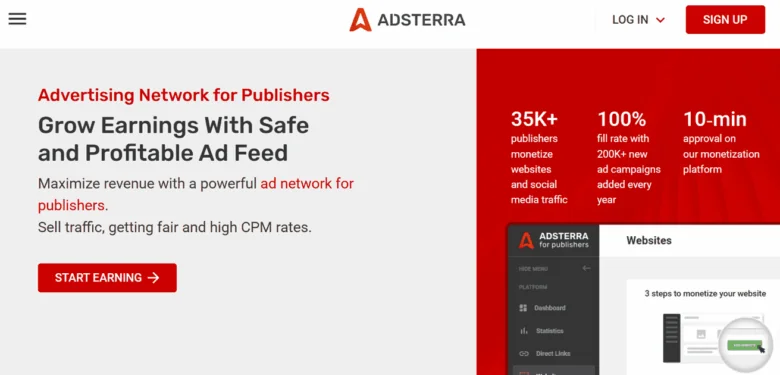
Ad networks offer an invaluable service to publishers. Most website owners don’t have the time and resources to pitch directly to numerous brands and hope that a few buy ad slots. This constraint is more pronounced in the early stages when you need to focus more on creating content.
Ad networks connect publishers to advertisers via a single platform. It takes care of the harder part of courting advertisers for publishers.
How to sell advertising with ad network?
Online advertising marketplace connects advertisers with website publishers. It matches ad slots from publishers with ad inventory from brands and businesses. The network charges the advertisers via these ways:
- Cost-per-action (CPA): Pay for every suggested user action, e.g., signup or subscription.
- Cost-per-click (CPC): The advertisers pay for each click on their ads.
- Cost-per-mille (CPM): Pay per thousand ad views.
The ad network takes a percentage of the transaction and passes the rest to the publishers.
Pros:
- Ad networks helps website owners find advertisers relevant to their target audience with dozens of targeting settings.
- The ad networks also negotiate ad rates on behalf of their publishers, taking a major burden off them.
- The enormous pool of advertisers gives publishers a 100% guarantee of filling their ad slots.
- Finally, they screen the advertisements to ensure they are safe.
Cons:
- You have to continually grow your traffic in order to grow your revenue.
- Your traffic should be of good quality even if it’s small.

Umair Nasir,
Marketing enthusiast
Niche-expert tip
“Adsterra’s platform works like a revenue engine, while you drive consistent traffic and generate clicks. With Adsterra, you get fast and reliable payouts, it helps you reinvest and scale your online business efficiently”.
What’s better: sell ad space directly or with ad network?
Selling ads directly can be tempting because it produces higher revenue. However, there are some notable stipulations:
- You need a high amount of traffic, think hundreds of thousands of monthly page views, for advertisers to consider working with you directly.
- An ad network handles the problematic part of finding advertisers and pitch to them and negotiate ad deals.
- The network already has its collection of advertisers who will compete to advertise on your website, so you can just sign up and connect with them for free.
Adsterra provides you with advanced, ready ads that have a higher click-through rate (CTR) by default. With a 100% fill rate and quality ads tailored to your audience, you use the best opportunity to monetize your traffic.
3. Affiliate advertising
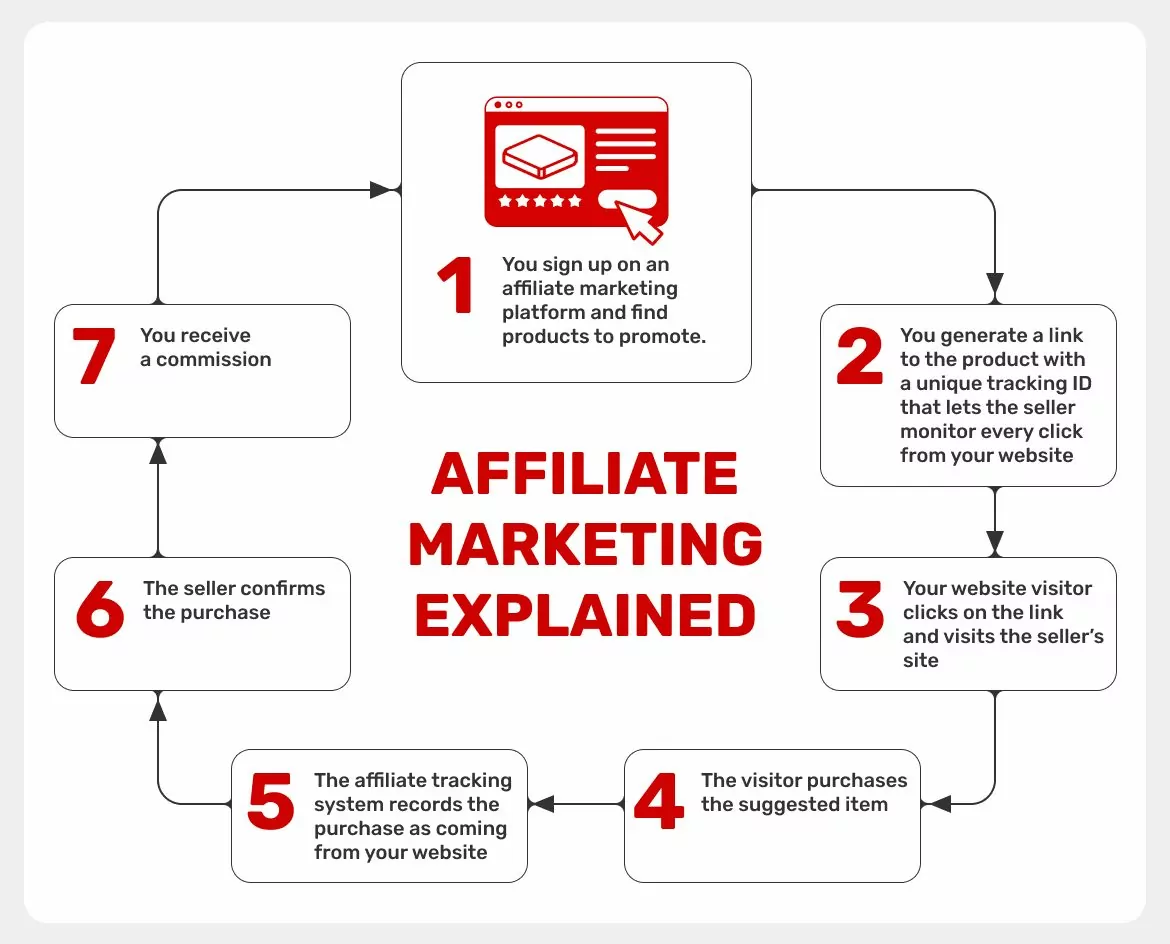
This method involves promoting products or services in exchange for a percentage of sales referred by your website. Partnering with affiliate networks and joining a suitable affiliate program, you’ll get a unique link for the product. With a tracking ID, you let the brand know which clicks originate from your website. When someone clicks on your link and purchases the suggested product, you’ll get a cut of the sale.
Pros
- Affiliate advertising pays very well if you generate significant sales.
- Easy to begin. There are endless affiliate marketing networks to sign up for.
- Affiliate links in your text are less distracting than display ads with images and videos.
Cons
- You are likely to only get paid when someone referred by your website and purchases a product. No purchase means no pay, regardless of how many views you send to the retailer.
- Affiliate marketing is a very competitive industry, with many publishers vying for relatively few advertising dollars.
- It can be challenging to identify the right products to promote to your audience.
4. Programmatic advertising
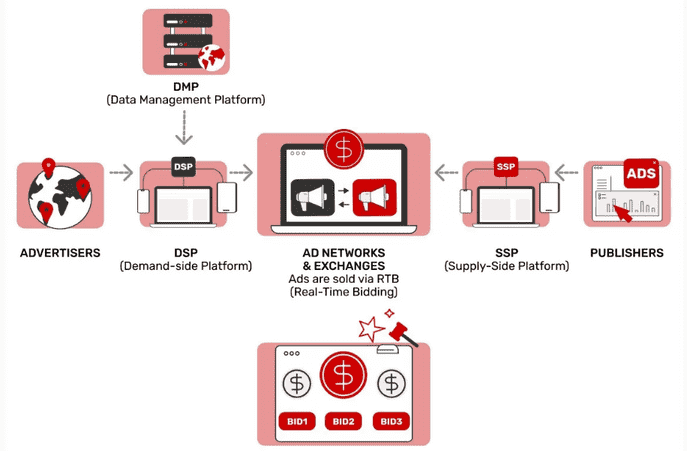
Programmatic advertising is an automated method of selling advertising via a third party. There are two main parties in the process. Supply-Side Platform (SSP) and Demand-Side Platform (DSP).
Publishers sign up on SSP and provide their ad slots. Advertisers bid in real-time for the slots via DSP, and an algorithm determines which ad will be shown at a specific time.
Pros
- Programmatic advertising involves highly competitive bidding environment, meaning publishers get high prices for their ad slots.
- The entire ad buying process is automated, giving publishers more time to focus on increasing traffic.
Cons
- Programmatic advertising marketplaces often have high minimum traffic requirements, which lock out most publishers.
- The entire process is automated, meaning there’s a higher risk of ad fraud because no human monitors it.
- Your site may get matched with advertisements irrelevant to your target audience. Irrelevant ads can reduce your credibility with users.
What is the impact of AI on selling ad space?
Over the past four years, the use of AI in marketing and advertising strategies have increased. The global revenues of AI in marketing are forecasted to surpass 107 billion by 2028.
AI is changing how ad space is sold, combining intelligence and automation to make the process faster, smarter, and more profitable. This rapid adoption highlights how essential AI has become for publishers. Here’s how AI helps:
- Better ad placement. AI studies how people behave on web pages and finds the best spots for ads. This increases clicks and helps publishers make more money.
- Smart pricing. AI adjusts ad prices based on demand, user interest, and advertiser needs. This ensures publishers get the most revenue from every ad slot.
- Precise targeting. AI divides audiences into groups based on their browsing habits, interests, and demographics. This helps show ads to the right people at the right time.
- Seamless ad integration. AI can suggest changes to website content and layouts to make ads fit naturally. This improves the user experience while keeping ads visible.
- Fraud protection. AI spots unusual activities like fake clicks or bot traffic. This protects ad campaigns and ensures trust between publishers and advertisers.
- Improved user experience. With AI, ads are more relevant and less disruptive, helping users stay engaged with the content.
Final thoughts
We have explained in detail how to sell ad space well on your website. You can either do it directly or go through a third-party network, with the latter being the easier option. There are lots of ad networks to choose from, but we recommend Adsterra for establishing unique business partnerships because it unlocks access to a high-quality pool of interested advertisers and supports many types of advanced and high-paying advertising formats.
How to sell ad space on your website? FAQ
How do I sell advertising space on my website?
You can sell advertising space on your website by pitching it directly to brands and businesses to buy the ad slots. Alternatively, you can sign up on an ad network with an existing inventory. The latter is the easier option, removing the stress of giving numerous sales pitches and managing client relationships. However, direct ad sales tend to bring higher revenue, provided you have an established audience matching a particular advertiser’s demand.
How much should I charge for ad space?
There’s no limit on what you can charge for ad space. It depends on various factors, including your traffic, audience engagement, brand appeal, and following, etc. To invoke a popular economic quote, an ad slot on your website is worth as much as someone is willing to pay. Don’t be afraid to charge what you think you’re worth if you’re selling ad spaces directly.
How much ad revenue per 1000 views on a website?
Website ad revenue per 1,000 views (CPM) can differ greatly, somewhere between $1 and $20. The actual number depends on a website’s niche, audience engagement, ad positioning, and the advertising network capabilities. High-earning niches are iGaming, Sports, VPN & Utilities, Mobile Apps, News, Lifestyle, VPN & Utilities, Mobile Apps, Ecommerce, Subscriptions, Browser Extensions, Sweepstakes, etc.
How do I add ad space to a website?
First, you can dedicate some sections of your website to advertising slots. The next step is to find willing advertisers, and sell ad space directly or via an ad network. Once you find advertisers, they’ll pay you either per click, per action, or per thousand impressions. You can also get paid for advertising by joining affiliate programs and earning commissions on every sale referred by your website.
Can you sell ad space with low traffic?
Yes, you can. Only few best ad networks don’t have minimum traffic requirements, like Adsterra, which favors publishers just starting out and without significant traffic. You can sign up with relatively low views and increase your revenue alongside your traffic. However, if you want selling advertising space directly, you’ll need significant traffic and a following.
